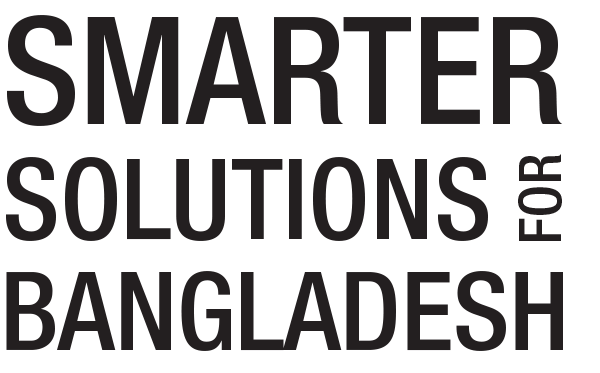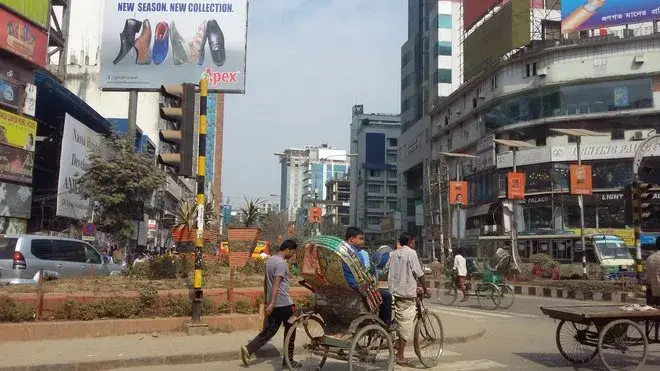Golden rice: the crop that promises incredible benefits in the fight against malnutrition
by Bjorn Lomborg
Over the past two decades Bangladesh has remarkably managed to feed an increasing population better—the UN’s Food and Agricultural Organization estimates that in 1993, the average Bangladeshi had access to just 2,000 calories per day, whereas today that number has increased to 2,450 calories per day. To a large extent this success comes on the back of ever-higher rice production—rice makes up 70 percent of the average daily calorie intake.
Unfortunately, rice may make an empty stomach feel full, but it lacks many vital micronutrients. The latest survey shows three-quarters of all children deficient in vitamin A. This matters, because studies show that every day, an estimated 88 children in the country go blind due to vitamin A deficiency. And each year, the condition is responsible for 28,000 deaths of children under age 6. Furthermore, chronic undernourishment leads to stunting, which hinders cognitive and physical development and affects about six million Bangladeshi children.
One solution is to provide vitamin A in capsules, which reach about 63 percent of children. It would also be good to get more children to eat other foods rich in vitamin A, but this is a challenge of both education and income, bounded by the 70 percent of rice intake. But what if there was a cheap and effective way to exploit that rice to get more vitamin A to everyone?
The Bangladesh Priorities project works with dozens of teams of local and international economists to find the best solutions for issues that range from child health to climate change to poverty. Each team studies the costs and benefits of solutions to these issues. In a partnership with Copenhagen Consensus and BRAC, we aim to help Bangladesh discover where we can do the most good for every taka spent on her development efforts.
New research by Uttam Deb, an economist at the International Crops Research Institute for the Semi-Arid Tropics, suggests that investment in the development and dissemination of golden rice can help Bangaldesh overcome vitamin A deficiency and its related blindness and deaths. Each taka spent on golden rice could do an outstanding 416 takas of good.
| Strategy | Takas of benefits per taka spent |
|---|---|
| Golden rice R&D | 416 |
Research on golden rice began in the 1990s as an effort to develop a type of rice that could counter malnutrition. The rice is fortified with beta-carotene, which is converted into vitamin A inside the body, and also gives the strain of rice it its color. Because the genetically modified rice is enhanced with micronutrients, it holds the potential to combat the critical vitamin A deficiency in Bangladesh. But because golden rice is a GMO, it has also been extremely controversial.
Opponents like Greenpeace ominously claim that GMO involves “risks to human health.” Yet, this blatantly contradicts the world’s big scientific evaluations. The US National Academies notes: “To date, no adverse health effects attributed to genetic engineering have been documented in the human population.” The EU commission concluded on 25 years of research: “there is, as of today, no scientific evidence associating GMOs with higher risks for the environment or for food and feed safety than conventional plants and organisms.” And the American Association for the Advancement of Science says: “The science is quite clear: crop improvement by the modern molecular techniques of biotechnology is safe.”
Greenpeace also maintains that there are better ways to deal with vitamin A deficiency. Greenpeace says that golden rice is “neither needed nor necessary,” and calls instead for supplementation and fortification, which are described as “cost-effective.”
To be sure, handing out vitamin pills or adding vitamin A to staple products can make a difference. But it is not a sustainable solution to vitamin A deficiency. And, while it is cost-effective, research indicates that golden rice is much more so.
Amazingly, Greenpeace claims that vitamin A deficiency is “being successfully tackled” in Bangladesh, apparently ignoring the 75 percent children who are still suffering.
Widespread adoption of golden rice would be incredibly valuable for Bangladesh. Not only is the rice fortified with beta-carotene, it also has higher crop yields than many other varieties. So benefits from its cultivation would arise both from increased farmer productivity as well the positive health effects. Furthermore, golden rice is a boro rice, so the geographic areas where it is most likely to succeed in the field overlap considerably with the areas where nutrition deficiencies are highest in Bangladesh.
The costs to release golden rice for cultivation by 2018 include funding for research and development to continue to adapt it to the Bangladesh environment. It would also require paying costs for crop trials, extension services, seeds, marketing, and education. In total, the costs would be more than Tk 800 million (Tk 80 crore).
The analysis estimates that if 30 percent of the population would adopt golden rice as part of their regular diet, it would reduce vitamin A deficiency nationwide by roughly 30 percent. It would also decrease stunting by 3 percent, preventing approximately 165,000 children from becoming stunted. When added together, the value of these health benefits is more than Tk 175 billion (Tk 17,500 crore).
In addition, the 10 percent increase in rice yields would benefit farmers by nearly Tk 163 billion (Tk 16,300 crore). Overall, the health and productivity benefits combined would equal more than Tk 338 billion (Tk 33,800 crore). Each taka spent toward adoption of golden rice in Bangladesh would do a huge 416 takas in benefits.
If Bangladesh is to achieve its goal of becoming a middle-income country by 2021, it will have to have a healthy population and workforce. Is golden rice one of the smartest solutions? Let us hear from you at copenhagen.fbapp.io/malnutritionpriorities. We want to continue the conversation about how to do the most good for every taka spent.
Dr. Bjorn Lomborg is president of the Copenhagen Consensus Center, ranking the smartest solutions to the world’s biggest problems by cost-benefit. He was ranked one of the world’s 100 most influential people by Time Magazine.
This article was originally posted in The Daily Star.


